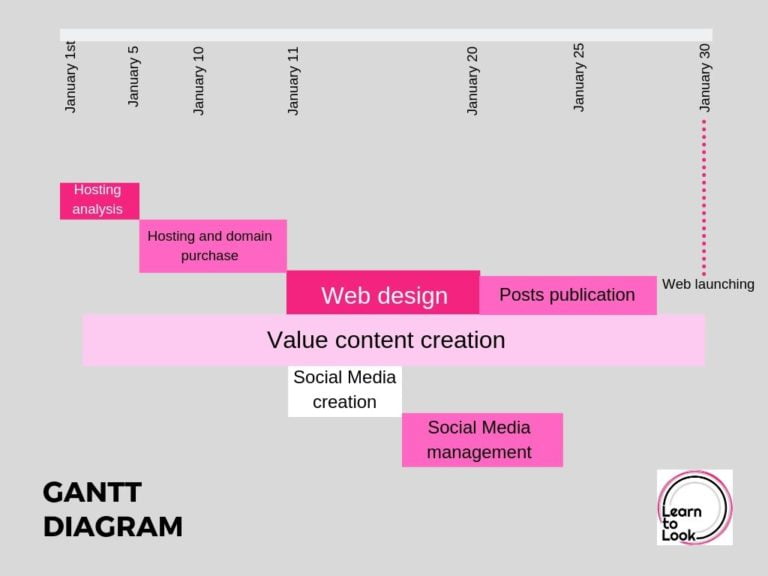You’ve probably tried to increase your productivity. Reading thousands of articles on how to stop procrastinating, downloading freebies and – basically – getting the time you should be working and instead reading more and more about how to get to work.
Well, all those “tips” of drinking water when you wake up and sleeping enough are great to HELP YOU perform a little better. But they are not the marrow of the matter.
So, as we don’t wanna waste time, we’re going to make it simple. We will tell you about the 5 best techniques (tested by experts and used by the biggest multinational companies) to manage your time and boost your productivity.
Ready?
1.- "3 minutes" technique
The 3 minutes technique (with its 2 and 5 minute variations) is one of the best existing techniques to decimate your tasks list.
Do you have a long list? Follow her with your eyes and ask each task if it takes less than three minutes to do it. It does? Then take it off and do it at the moment!
Erase it from your list when you’re done.
I’m sure at the end of the list you’ll have at least 10% less things to do.
This technique is recommended to be the first thing you try in the morning when you are going to carry on the slopes of the day.
Do you have to answer an important email? (Do not check all of your mail, or enter each link of each mail that you get). Then do it now! Return a specific call? why wait?!
Everything that takes less than three minutes is not worth the wait, so do it and take it off, first thing in the morning.
The logic of this technique indicates that mixing heavy tasks with lightweights only complicates your organization. Organizing light tasks at the beginning, it makes you warm up with the least important and leave the heavy work for when you are well awake.
The rest of the tasks sure deserve a bigger analysis, so you can apply the following techniques.
2.-Productivity by concentration: Pomodoro
I’m sure you’ve heard of the Pomodoro technique.
Here we recommend to pre-prioritize tasks (you can see how to do this correctly at the next point).
This technique is applied during the development of the tasks. So it is important that you do not waste your time on tasks that you could delegate, on which you need to decide, or even worse: tasks that came to your mind but are not necessary. At least not in a medium or short term.
Now yes, once you have your to-do list duly prioritized, you must extend that list to the right, decomposing your tasks in smaller tasks. And each mini-task should last between 20 and 30 minutes. Each of these time blocks are called “Pomodoro”. Ideally, in fact, each pomodoro lasts about 25 minutes.
Between one task and another, you will rest 5 minutes doing something that has NOTHING TO DO WITH WORK. This is not a detail, it’s important. Don’t answer emails from work, don’t talk about work with your mates. Watch online catalogs, read style notes. Or, yet better, walk or do some other exercise.
Many specialists say that exercise oxygenates the body, causing that oxygen to reach the brain and “refresh” it. So you can concentrate better when you start with the next Pomodoro.
When you finish your complete task through the microtasks in which you have broken it, (5 or 6 Pomodoros are suggested maximum per task), you will take a rest of 25 minutes or half an hour. That’s your reward break.
The logic of this technique is exactly that: use the longer life time of “concentration” to develop a task, and give a little rest to the brain. Every few little breaks, you have your big break. The “reward”.
That’s how you get the most out of your brain, managing the time it works with the most concentration.
Download your Pomodoro template and do the test!
EXTRA TIP
Organize your life with this 5 apps.
3.-Time is the key: Eisernhower.
I love the Eisenhower box, it makes me tidy up EVERYTHING i THINK I have to do in the day.
The thing is: you write your tasks for the day (or for the week) and meets a reality. We write them in the order they appear in our minds. And – sometimes – that can respond to a greater unconscious concern for this or that task. But other times, our unconscious can play a trick to us and completely NEGATE a super-important task we don’t want to do.
So that’s when a list doesn’t work. What are we going to use? A BOX!
The Eisenhower box is a beautiful double entry chart where we will be locating our tasks, and classifying them to know which of them we should devote our time.
Here’s some useful advice. If your daily tasks are not so many and we only talk about a project – at most two – you can use our freebie. Writing your tasks will be easy and you can download it and print it as many times as necessary.
But if you are in charge of a team or several projects (or both), I advise you to grab a blackboard and use some post-it for each task. That way, you can easily add, move and remove tasks and without complicating the rest of the issues to be resolved.
So, in this box we have two rows and two columns. The columns divide what is important, what is not. And the rows separate the urgent, the non-urgent. So your four cells are: important and urgent, important but not urgent, not important but urgent, and not important and not urgent.
Your first cell, the one of the tasks that you should accommodate in your Pomodoros sheet, contains the important issues (i.e., that directly affect your goal) and urgent. Those are the tasks that you have to solve today, no matter what. Not tomorrow, not another person.
Your second cell contains important but not urgent tasks. About them, you must decide what you need to execute them or if you want to modify them. You have time, so maybe you want to analyze it and consider if there is anything that will take you more directly to fulfill your goal. That analysis, however, will be leaving for a day where your tasks are not so many. Another option is to delegate this analysis to a team and then supervise it.
Your third cell is the non-important but urgent tasks. This must also be done today, but you can surely delegate them. We will talk about delegation at another time, but consider it a lifesaver and a an AMAZING way to leadership that can reinforce you as a leader AND as a person, in addition to considerably improving the outcome of your work.
Your fourth cell, the last, has tasks that are not important and not urgent. These tasks should be postponed if they are vital, but we strongly recommend removing those that are USELESS. What is this? Tasks that do not make a difference today, and they will never make it. Tasks that will not be enlarged, and that will not be more important tomorrow. Eliminate them with no mercy out of your list.
Now you know how to organize the importance of your tasks. Keeping priorities tidy is the key to investing your time in what really matters. Be it a lot or little, it will make a difference, because you will be doing THAT task that takes you directly to your results.
You can download the Eisenhower box, and tell us how it turns out!
EXTRA TIP
How to manage time at work not to feel pressure.
4.- 80/20, "Success" formula
This is one of the best known techniques in time management, albeit a bit more vague. You need to know in depth how it works about what you do: Which 20% gives you 80% of results?
They say that of all the tasks destined to the same purpose, you can highlight a few (that the productivity experts estimate of 20%). These are the ones that make the difference and give the greatest amount of results. Yes, that 80%.
So you have to pay attention to identify your 20%.
Once you got it, always start by performing those tasks of your 20%. Only after you are sure you are finished, you start with the tasks of the other 80% that does not give you so much result. Or, better yet: manage them to be done automatically and no longer have to worry about them, more than once a month.
Of course, we are also in favor of automating everything that’s possible of that 20% of tasks indispensable to obtain your 80% of results.
After all, machining and scheduling tasks to automate processes is part of the formula to success. The idea is to save as much time as possible because, guess what? You also need time to live 😉
5.- Gantt diagram
This diagram is one of the wonders that have changed my life.
When you carry a team or several projects at the same time, it can happen that one project depends on another. That someone’s work depends on someone else’s previous work. Or, that a project is delayed and consequently delays all the rest. Especially if you work with deadlines.
The Gantt diagram is a easily drawing chart you can do yourself and will vary depending on the magnitude of your projects and the tasks inside them. But let me show you an example.

This graphic will help you to sort your linked projects, or the tasks within a project.
First, you must identify the tasks that are unfailingly dependent on others, those that have deadlines that cannot be moved and those that are independent or can be done regardless of their time, while they are ready at the end of the project.
The hard core of this diagram will be the tasks dependent on others and with deadlines. The sum of the times that last each one will be the MINIMUM life TIME of your project. Don’t commit to finishing it before, and don’t use it as a reference to promise a delivery. Just use it to organize and set the time limit.
Draw a task at the end of the other, and the rest placing them logically in the space around, as you should do them in a contemporary time or not.
If you have a new digital business to undertake, you must analyze what hosting to buy, then buy the hosting and the domain, design the webpage. But you can create valuable content while you do all of it, organize your social networks and plan the release date. You must analyze the hosting first to know which one to buy, and then you will be able to continue with the design. Although you can go working on the content from now on. As in social networks.
Do you see how some things depend on others, and yet there are some that we can do independently?
The Gantt diagram helps you visualize that in a great timeline that you find above or below your tasks. And you can even include the dates for more control, or time intervals.
As the tasks are fulfilled, you can paint the blocks that represent them, or manage with a ruler through the timeline. So you know if they are being fulfilled in time and form, and you can hurry the rest if necessary.
This type of graphics also gives you the necessary elements to make the decisions you need. If you include the cost of each task, you can graph it in the corresponding block and go to compensate as you progress, depending on the budget you have available.
Very useful, right? You already have the experts techniques most used in the biggest international companies.
Are you going to try them? Tell us how you turn out!
Inspire a friend! Share us!




